i'm trying to get the frequency of a signal via fourier transform but it's not able to recognize it (sets the peak to f=0). Maybe something is wrong in my code (FULL reprudible code at the end of the page):
PF = fft.fft(Y[0,:])/Npoints #/Npoints to get the true amplitudes
ZF = fft.fft(Y[1,:])/Npoints
freq = fft.fftfreq(Npoints,deltaT)
PF = fft.fftshift(PF) #change of ordering so that the frequencies are increasing
ZF = fft.fftshift(ZF)
freq = fft.fftshift(freq)
plt.plot(freq, np.abs(PF))
plt.show()
plt.plot(T,Y[0,:])
plt.show()
where Npoints is the number of intervals (points) and deltaT is the time spacing of the intervals. You can see that the peak is at f=0

I show also a plot of Y[0,:] (my signal) over time where it's clear that the signal has a characteristic frequency

FULL REPRUDICIBLE CODE
import numpy as np
import matplotlib.pyplot as plt
#numerical integration
from scipy.integrate import solve_ivp
import scipy.fft as fft
r=0.5
g=0.4
e=0.6
H=0.6
m=0.15
#define a vector of K between 0 and 4 with 50 componets
K=np.arange(0.1,4,0.4)
tsteps=np.arange(7200,10000,5)
Npoints=len(tsteps)
deltaT=2800/Npoints #sample spacing
for k in K :
i=0
def RmAmodel(t,y):
return [r*y[0]*(1-y[0]/k)-g*y[0]/(y[0]+H)*y[1], e*g*y[0]/(y[1]+H)*y[1]-m*y[1]]
sol = solve_ivp(RmAmodel, [0,10000], [3,3], t_eval=tsteps) #t_eval specify the points where the solution is desired
T=sol.t
Y=sol.y
vk=[]
for i in range(Npoints):
vk.append(k)
XYZ=[vk,Y[0,:],Y[1,:]]
#check periodicity over P and Z with fourier transform
#try Fourier analysis just for the last value of K
PF = fft.fft(Y[0,:])/Npoints #/Npoints to get the true amplitudes
ZF = fft.fft(Y[1,:])/Npoints
freq = fft.fftfreq(Npoints,deltaT)
PF = fft.fftshift(PF) #change of ordering so that the frequencies are increasing
ZF = fft.fftshift(ZF)
freq = fft.fftshift(freq)
plt.plot(T,Y[0,:])
plt.show()
plt.plot(freq, np.abs(PF))
plt.show()